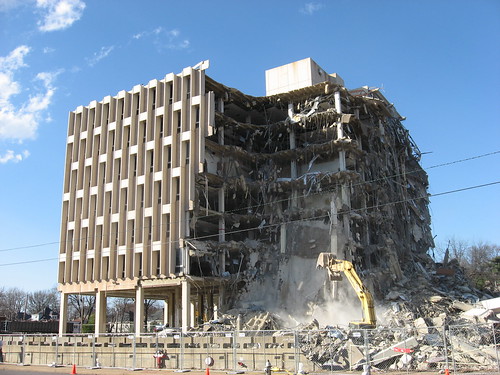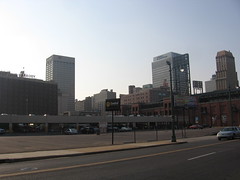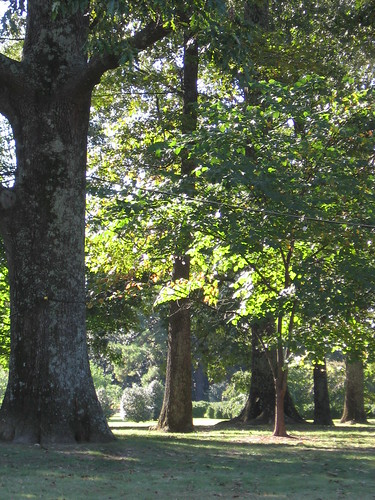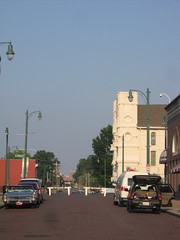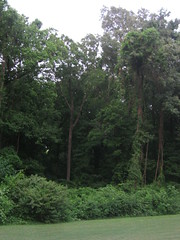I received an email recently from the
Natural Resources Defense Council announcing their program called
Picturing Smart Growth. It's a series of smart growth visualizations in 70 different communities, showing the path from the not so bright present to a much smarter future.
One of
their featured scenarios is in Memphis, and specifically, a street around the corner from Stax and Soulsville (College Street? The actual street isn't listed.)
The first transition, from the present

to the first phase,

is what really caught my eye.
The trees not only beautify the street but alter it spatially, becoming architectural.
This spatial effect was confirmed for me by the great
Suburban NationThese trees are not intended merely to be decorative; rather they are included to create spatial definition when the buildings fail to do so. The trees narrow the space and provide a natural vault that contributes to the pedestrian's sense of enclosure and comfort.
So Memphis, space and cash poor but tree and land rich, could move inexpensively toward a smart, built future by planting trees as the official "Phase I" of all our neighborhood rebuilding. Even if they're just regularly spaced seedlings, the young trees will be placeholders for the space that will emerge beneath their vault.
Plus an ordered, ritual planting could provide a very immediate, on-the-ground beginning to charrette implementation. A simple, tangible, visible groundbreaking.
Labels: architecture, environment, na, neighborhoods, public spaces, trees, urban planning




